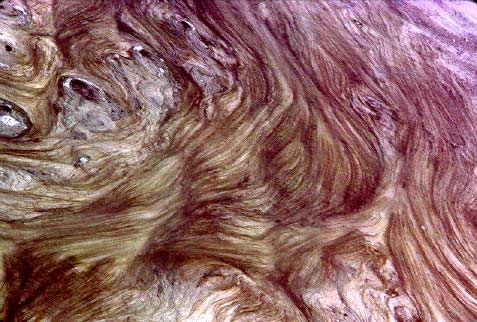

The ribbons of color that stream from hot springs are usually formed by a variety of bacteria. The green and orange mats that you see here live in water of varying temperatures; in essence, the colors serve as temperature indicators.
Hot springs cyanobacteria are wonders of life at high temperatures. Some live in waters as hot as 167° F (76° C). At this temperature they are usually yellow, but become darker - orange, rust or brown - as the water cools. Between 113 ° and 131° (45° and 55° C), other species may appear which will modify the colors even more. Certain varieties are scientific curiousities because they are extremely specific for their environment. they may be found around the world living only in hot spring waters.

Yellow or pink strands of bacteria sometimes appear in water as hot as 196° F (92° C), just below the boiling point (water boils at 199° (93° C) at this elevation). Chemical deposits of sulphur, iron oxides, arsenic sulfide, and other substances add vivid colors to the hot springs in a few areas of the park, but not generally in the Midway and Fountain Paint Pots Basins.

At Norris Geyser Basin the Echinus Geyser and Emerald Spring release acidic water. Hardy microscopic plants, like lime-green Cyanidium algae, thrive in these warm acid waters. Orangish cyanobacteria may be found in many runoff stream in Porcelain Basin. From a distance these bacteria look like rusty iron-rich mineral deposits. Amazingly, living organisms thrive even in the extreme environments of Norris' acid hot springs! These bacteria are on the cutting edge of research in the fields of medicine and criminal investigation, yielding new tools in such complex areas as AIDS research and DNA "fingerprinting."
This material is abstracted from brochures distributed by The Yellowstone Association for Natural Science, History & Education, Inc.